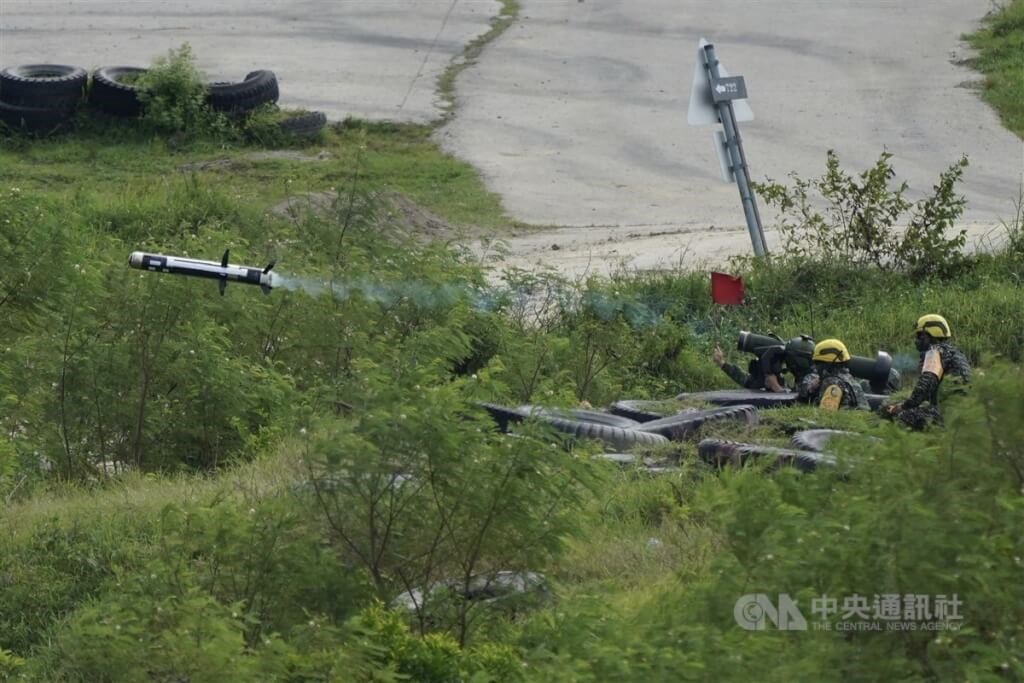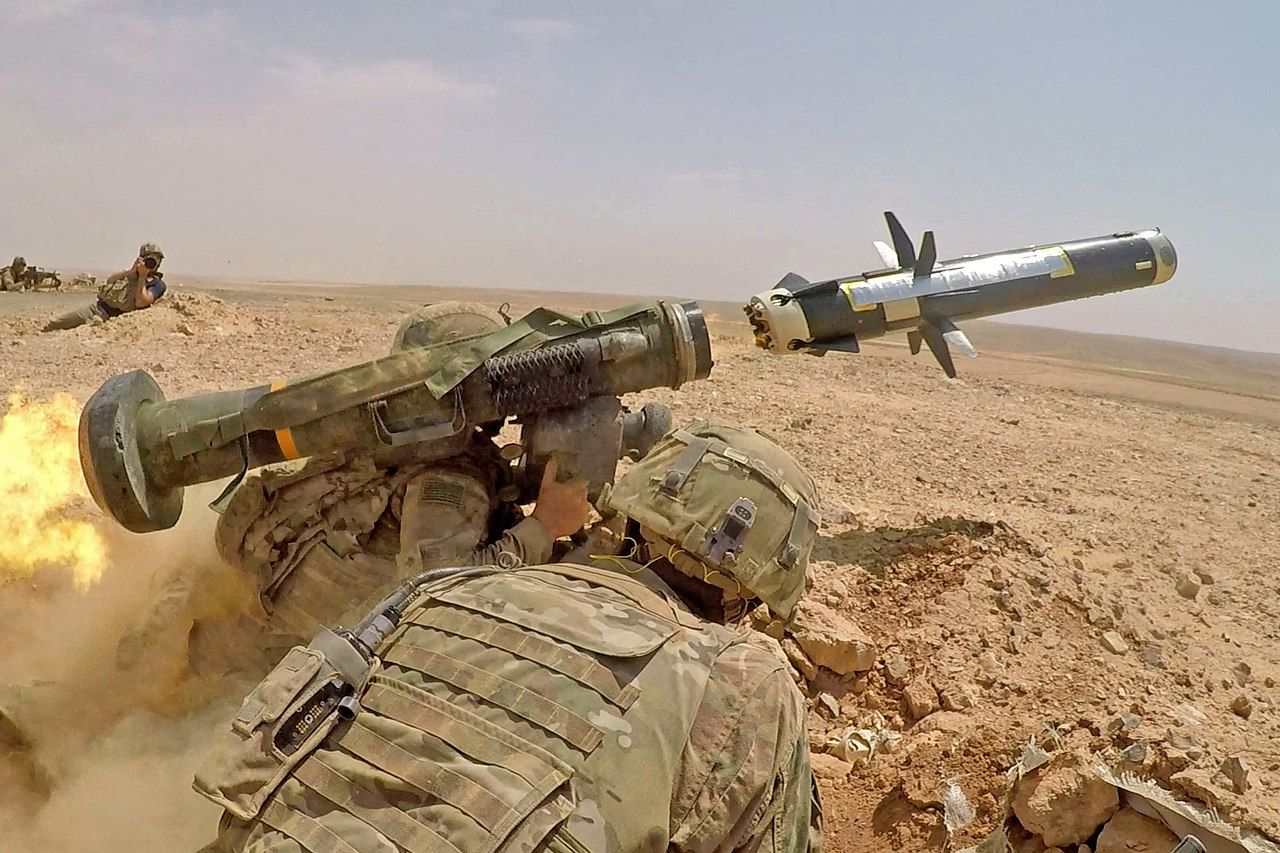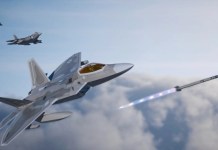Taiwan is looking at the US-made FGM-148 Javelin portable anti-tank guided missile (ATGM) for being able to hit People’s Liberation Army (PLA) armored vehicles and troop-carrying boats for an amphibious landing.
Reports from Taiwanese media quoted unnamed military officials giving details of this weapons transfer, coming in the backdrop of President Tsai Ing-wen’s visit to the United States (US) and rising tensions with the People’s Republic of China (PRC).
In April 2022, Taiwan had around 1,000 such missiles and was awaiting another 400 from the US, which will begin deliveries by the second half of this year and early 2024. The Taiwanese military received 42 launchers by late-2022.
Javelin Is A Deadly Weapon
While the type already being used by the Taiwanese military is a third-generation variant, it is unclear if the new batch it is expected to receive is an advanced one. The weapons sales are part of a 2019 deal approved under then-President Donald Trump, which also includes 1700 units of the TOW 2B-RF wire-guided missile.
The Javelin’s warhead is capable of destroying modern tanks by striking them from above, where their armor is weakest. This is called a ‘top attack’ mode, where the missile follows a steep parabolic trajectory before hitting the tank at incredibly high speeds, affected by both gravity and its own rocket propulsion.

Even buildings and targets beneath barriers or too near for an overhead hit can all be attacked with the Javelin. It has a range of 2.5 kilometers (1.5 miles), and in top-attack mode, it can reach a maximum altitude of 150 meters (490 feet) or 60 meters in direct-fire mode.
It also has an infrared seeker built-in for precision strikes.
Taiwan Wants To Rain Down Javelins On Invading Chinese Troop
Su Ziyun (Su Tzu-yun), a research fellow at Taiwan-government funded think-tank, Institute for National Defense and Security Research (INDSR), was quoted saying how the Javelin’s fire-and-forget top-attack profile can penetrate armor up to 800 millimeters thick.
“It can be used to great effect against tanks, enabling them to climb above their targets and strike where the armor is weakest,” Su was quoted in an article on Focus Taiwan.
He also said the TOW’s 2B-RF variant addresses the flaw in its previous iteration, where the copper wire that spooled out of the missile, used to get dampened. A previous installment of Taiwan’s annual Han Kuang exercises showed how the older TOW missiles often failed to hit their targets.
“The TOW 2B RF missiles use a wireless radio-guided system, which enables them to be deployed against enemies across water bodies. The Republic of China (Taiwan) military plans to use the Javelin and the TOW 2B-RF against topless landing craft and light-armored landing vehicles,” another report in Taiwan News quoted him as saying.
A large amount of anti-armor weapons used as a near-shore defense of a beach can, therefore, significantly grind down a PLA battalion-sized landing force of 20 to 30 landing craft, the thinking in the ROC goes.
It began looking at the Javelin from its extensive usage by Ukraine against Russian armor since the war began, a report in the South China Morning Post (SCMP) said in April 2022. Since then, it has been considering employing it against People’s Liberation Army (PLA) tanks and put it through several drills in an exercise involving the 66th Marine Brigade in early April last year.
In Ukraine, however, the Javelins gradually disappeared from prominence after August 2022, although the Ukraine armed forces (AFU) are expected to have sufficient stock of the weapon. The US had supplied 5,000 Javelins to the AFU as part of a US$9.8-billion security assistance as of August 8, according to the State Department.
EurAsian Times reported that same month about leaked internal documents from Raytheon showing the Javelins supplied to Ukraine has a poor hit-to-miss ratio, fall short of the advertised range, and malfunction frequently.
The last video of a Javelin missile in action was from Friday, showing Ukraine’s 36th Marine Infantry Brigade engaging three Russian armored vehicles, including two tanks and one Infantry Fighting Vehicle (IFV), in the Donetsk region.
All three are eventually destroyed, and there seem to be several attempts on the last one, as one of the missiles appears to miss.
The one before that from March 27 showed a Russian BMP Infantry Fighting Vehicle (IFV) being hit by what is claimed to be a Javelin missile. The action was conducted by the 8th Separate Mountain Brigade. Both videos are recorded from overhead drones.

Will Javelins Stall A Chinese Amphibious Landing?
Whether they would be effective against a PLA attack remains to be seen. If China launches an amphibious assault on Taiwan, that will mean it has exhausted all diplomatic options and the calibrated military encirclement to coerce the Taiwanese leadership and possibly targeted degradation of its military through long-range missile strikes.
In such a situation, the amphibious landing will be heavily supported by powerful Intelligence Surveillance Reconnaissance (ISR) drones and attack helicopters, and possibly Unmanned Surface Vessels (USV) to draw enemy fire.
Taiwan’s Javelin inventories will not be unlimited and, at some point, will begin running out. They, however, largely fit into its “asymmetric” defense capabilities that the Overall Defense Concept (ODC) envisaged, where the thrust is laid on non-legacy weapons like thousands of drones, stealth fast-attack craft, precision-guided missiles, flexible sea mines, rocket artillery and MANPADs, instead of capital arms like fighters, tanks, and artillery.
These have been assessed to effectively tackle the Chinese swarms of boats, missiles, and UAVs and possibly even the larger PLAN flotilla in a multi-layered campaign of attrition.
- The author can be reached at satamp@gmail.com
- Follow EurAsian Times on Google News




